New Data Show the Immediate Value of Scientific Research
Apr 3, 2014, 13:00 PM
University research is a key component of the US economic ecosystem, returning the investment through enormous public value and impact on employment, business, and manufacturing nationwide.
Study Confirms Economic Impact of Funding Reaches Far and Wide
University research is a key component of the US economic ecosystem, returning the investment through enormous public value and impact on employment, business, and manufacturing nationwide.
Using new data available to examine the short-term economic activity generated by science funding, researchers have for the first time been able to illuminate the breadth of the scientific workforce and the national impact of the research supply chain that is funded by federal grants.
Most of the workers supported by federal research funding are not university faculty members. In fact, fewer than one in five workers supported by federal funding are faculty researchers. The study, published this week in the journal Science, provides the first detailed information about the short-term economic impacts of federal research spending, the researchers said.
Using a new data set, the researchers also found that each university that receives funding spends those dollars throughout the United States--about 70 percent spent outside their home states--supporting companies both large and small.
The researchers conclude that federal funding has a wider impact than is often assumed. “The process of scientific research supports organizations and jobs in many of the high skill sectors of our economy,” the researchers wrote in Science.
The study was conducted by researchers from the American Institute of Research, the Committee on Institutional Cooperation, University of Michigan, University of Chicago, and the Ohio State University. The data came from the STAR METRICS project, which is a partnership between federal science agencies and research institutions to document the outcomes of science investments to the public.
In this study, the researchers examined STAR METRICS data from nine universities--Michigan, Wisconsin-Madison, Minnesota, Ohio State, Northwestern, Purdue, Michigan State, Chicago and Indiana (all members of the Committee on Institutional Cooperation consortium).
The universities in this study received about $7 billion in total research and development funding in 2012, and about 56 percent of that came from the federal government. One key insight from the study was whose jobs were supported by federal funding. “Workers with many different skill levels are employed, and these are not primarily faculty,” the authors said.
Faculty members accounted for fewer than 20 percent of the people supported by federal funding. About one in three workers is either a graduate student or an undergraduate. One in three is either research staff or a staff scientist, and about one in ten is a post-doctoral fellow.
The study also sheds light on where universities spend the federal funding they receive. In 2012, almost $1 billion of research expenditures were spent with U.S. vendors and subcontractors.
Of those expenditures, 15 percent went to vendors in the university’s home county, 15 percent in the rest of the home state and the balance to vendors across the United States.
The researchers noted that universities bought goods and services from a wide range of contractors in a variety of industries: everything from test tubes to telescopes and microscopes to gene sequencing machines.
Many of the purchases came from large U.S companies. But as the researchers examined the websites of some of the tens of thousands of vendors, “we were struck by how many are small, niche, high-technology companies…” they wrote.
Noting the scope of the impact of scientific work being done across universities, co-author Roy Weiss, Deputy Provost for Research at the University of Chicago, said, “Research universities are dedicated to the discovery of new knowledge. This study reports the first cooperative endeavor by multiple universities to evaluate the benefit of government investment in research. In addition to making the world a better place by virtue of these discoveries, we now have data to support the overall benefits to society.”
“The main purpose of science funding isn’t as a jobs or stimulus program, but this study shows there are also major short-term economic benefits to science funding,” said Bruce Weinberg, co-author and professor of economics at Ohio State.
As Julia Lane, Senior Managing Economist at the American Institutes for Research and a lead researcher on the project, summarized, “This study provides evidence that while science is complicated, it is not magic. It is productive work. Scientific endeavors employ people. They use capital inputs. Related economic activity occurs immediately. Policy makers need to have an understanding of how science is produced when making resource allocation decisions, and this study provides that information in a reliable and current fashion.”
For more on the study, please see:- The full article
- 90-second video: Julia Lane on why understanding the scientific process is key to investing wisely in science.
Contacts:
Barbara McFadden Allen, Executive Director
Committee on Institutional Cooperation
(217) 766-1425
Julia Lane, Senior Managing Economist
American Institutes for Research
(202) 403-5867
Bruce Weinberg, Professor of Economics and Public Administration
Ohio State University
weinberg.27@osu.edu
(614) 292-5642
About the CIC: The CIC is the nation's premier higher education consortium of top-tier research institutions, including the Big Ten Conference members and the University of Chicago. Through collaboration CIC members save money, share assets, and increase teaching, learning and research opportunities. Founded in 1958, CIC members engage in voluntary, sustained partnerships such as library collections and access collaborations; technology collaborations to build capacity at reduced costs; purchasing and licensing collaborations through economies of scale; leadership and development programs for faculty and staff; programs that allow students to take courses at other institutions; and study-abroad collaborations. For more information, please visit http://www.cic.net.
